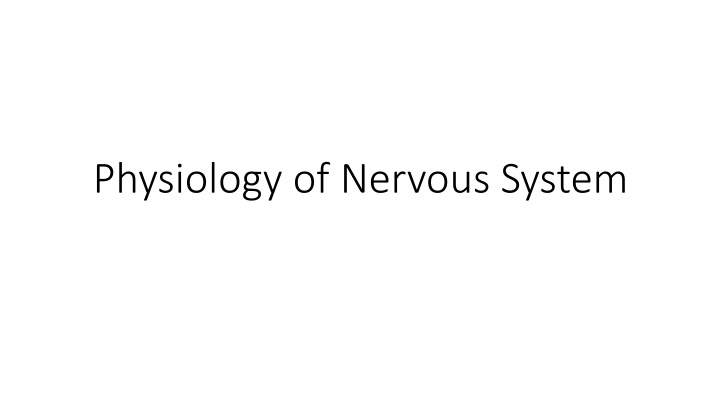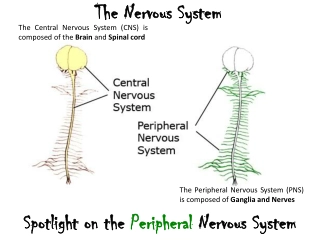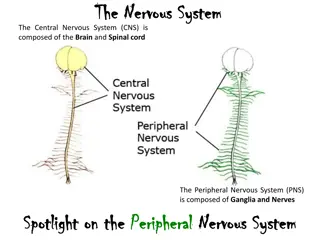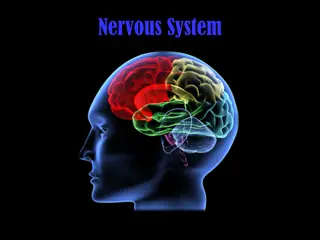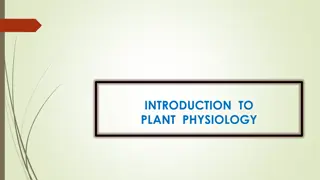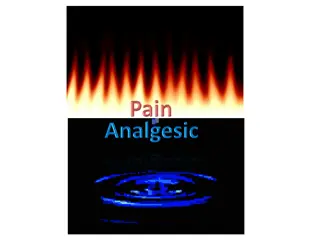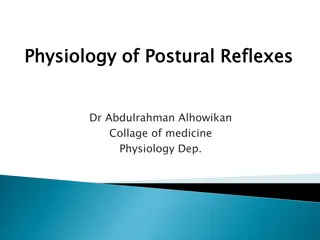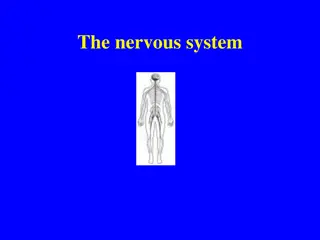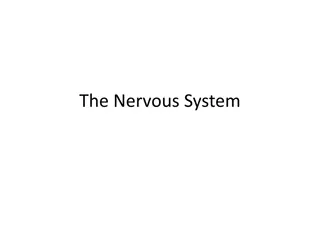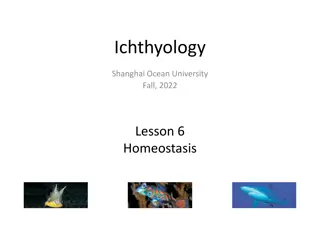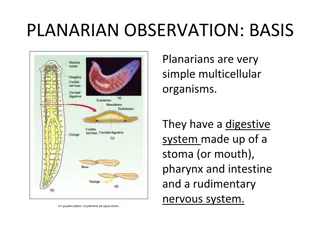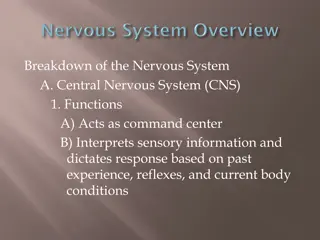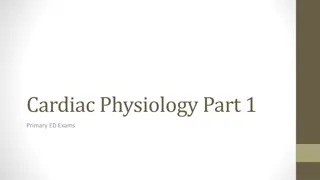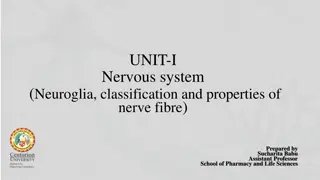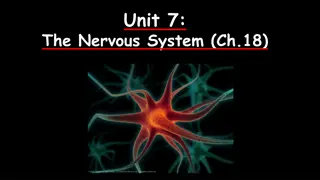Physiology and History of Nervous System
The physiology and history of the nervous system explore the intricate functions and fascinating discoveries related to the brain and nerve activity. From ancient insights by Hippocrates to modern research by Ivan Pavlov and others, learn about the coordination, irritability, and conduction abilities of the nervous system. Dive into terminologies such as neurons, nerve fibers, and glial cells, and understand the central nervous system's vital role in biological integration and coordination of body functions.
Download Presentation

Please find below an Image/Link to download the presentation.
The content on the website is provided AS IS for your information and personal use only. It may not be sold, licensed, or shared on other websites without obtaining consent from the author.If you encounter any issues during the download, it is possible that the publisher has removed the file from their server.
You are allowed to download the files provided on this website for personal or commercial use, subject to the condition that they are used lawfully. All files are the property of their respective owners.
The content on the website is provided AS IS for your information and personal use only. It may not be sold, licensed, or shared on other websites without obtaining consent from the author.
E N D
Presentation Transcript
History of Research on Nervous system History of Research on Nervous system Hippocrates discuss the epilepsy as disturbance of brain and also indicated that the brain is involved with sensation and is seat of intelligence. 460 -379 B.C. 335-280 Herophilus, also known as father of anatomy, believes that B.C. ventricles are seat of human intelligence. Domenico F.A. Cotugno, describes the spinal, subarachnoid and cerebrospinal fluid and reported that ventricular and spinal fluids are connected. 1764 1800 Samuel Von Sonmering identifies black material in the midbrain and called it substantia nigra .
1903 Ivan Pavlov coins the word, conditioned reflex. Golgi and Cajal won nobel prize for describing structure of nervous system. 1906 1906 Sir Charles Scott Sherrington publishes, The integrative action of the nervous system that describes the synapse and motor cortex. Allvar Gullstrand was awarded Noble Prize for describing optics of eye. 1911 1911 George Barger and Henry Dale discover nor epinephrine. 1961 George Von Bekesy, was awarded Nobel Prize for his work on cochlea.
NERVOUS SYSTEM NERVOUS SYSTEM Nervous system is the body s chief co-ordinating agency exerting control over almost all the body functions. Nervous system specializes in Irritability and conduction. Irritability is the ability to receive and respond to the messages from the external and internal environments. Conduction is the ability to transmit messages to and from the coordinating centers.
Central nervous system / somatic nervous system Autonomic nervous system/ Vegetative nervous system SNS PSNS
Terminologies Terminologies Neuron / nerve cell is the functional unit of nervous system Nerve fibre is axon surrounded by myelin sheath. Nerve is a group of nerve fibres from many neurons closely enveloped in the connective tissues, which connects central nervous system. Nucleus is the cluster of several nerve cell bodies in CNS. Ganglion is the collection of neuron bodies outside CNS in the peripheral nervous system, enclosed in the connective tissue sheath. They are also present along the course of several nerves. Glial Cell / Neuroglia : are connective tissue cells of the brain. Their number is about 10 times more than neurons.
Function of central Nervous system Function of central Nervous system Biological machinery for integration and co-ordination of body functions. Regulates internal environment , behaviour of the organism with in the external environment. Sensory systems of the body relays information about external environment (Ex. Sound, sight, smell, taste, temp. and touch) to the higher centers of brain. CNS - conduction of impulses. CNS - responsible for contraction of skeletal muscles. Behavior of animal Regulates endocrine system and thus controls metabolism and growth functions of the body.
Development of Central Nervous System Development of Central Nervous System During embryonic stage CNS develops from a simple tube of ectoderm, the primitive neural tube. The cells lining it becomes the nervous tissue of the brain and spinal cord. The canal becomes distended to form the ventricles of the brain and central canal of the spinal cord.
Development of Central Nervous System Development of Central Nervous System Prosencephalon (Fore brain) Diencephalon Telencephalon Mesencephalonen (Mid brain) Rhombphalon (Hind brain) metencephalon Myelencephalon
